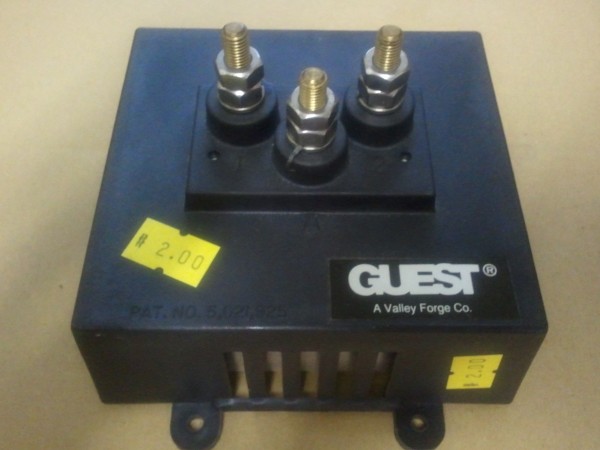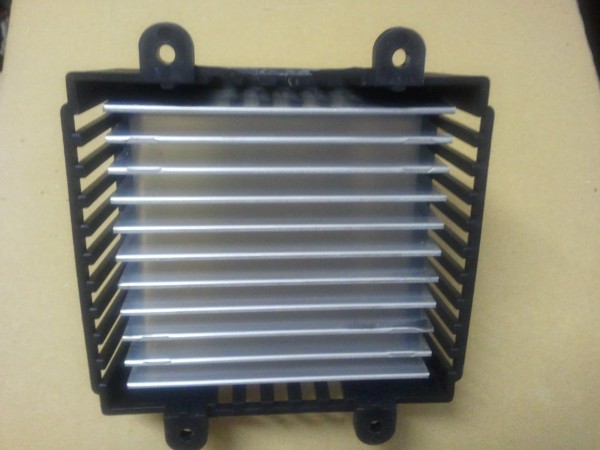On a recent thrift store expedition (you never know what you’re going to find), I came across an interesting-looking box. It was apparently designed to be wall-mounted, and had three bolts for electrical contacts and a large heatsink.

The mystery device, much as encountered at the thrift store. (Electrical insulating boots were covering the outer two bolts.) (Click for larger.)
It was apparently an electrical device of some sort — if the tie-point bolts didn’t give that away, the large heatsink would. The heatsink also implied that it was expected to dissipate a fair amount of power.
The three leads on the top were marked 1, 2, and A (A being the center bolt). My initial guess was that it was a rectifier of some sort — perhaps a battery isolator for marine or automotive applications. This was confirmed by an ohmmeter test: connecting the negative lead to A showed open circuits to pins 1 and 2, but reversing the leads showed 33 to 35 kilohms resistance.
Diodes, being nonlinear devices, can produce strange resistance readings, so I did a quick I-V curve test using a lab supply. Current was near zero up to 0.6V, then rose very sharply to over an amp near 0.7V. Silicon diodes, then, from A to both 1 and 2. It’s a rectifier.
Now that I had the puzzle basically solved, I felt it was no longer cheating to do a Google search. A few links later, I found something very similar: a two-battery, 70-amp battery isolator. Mystery solved!



Also, patent 5021925.